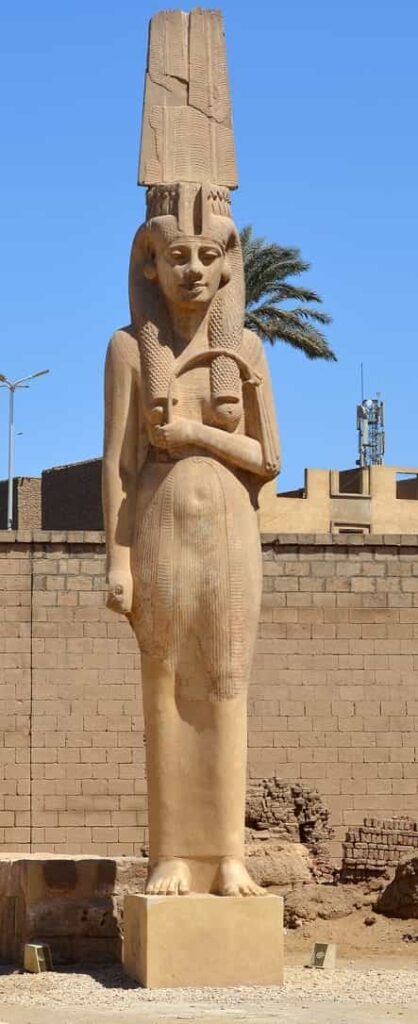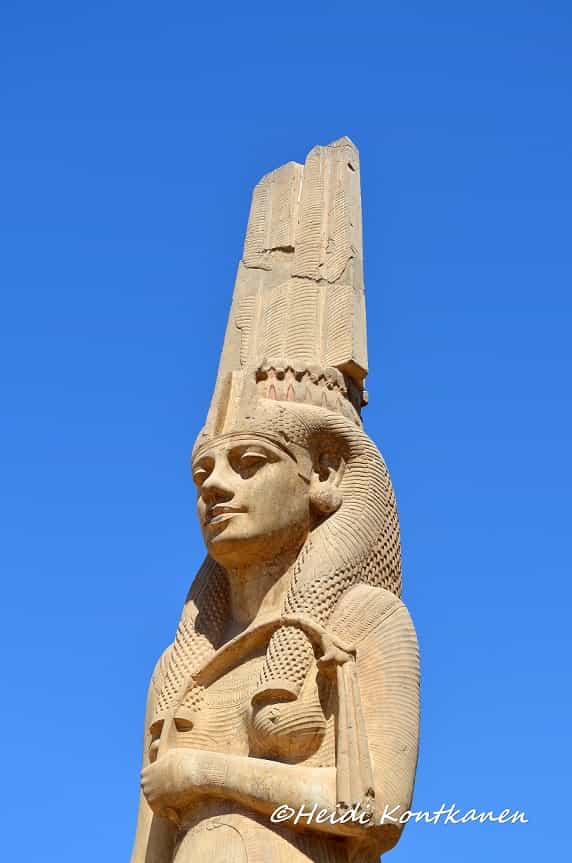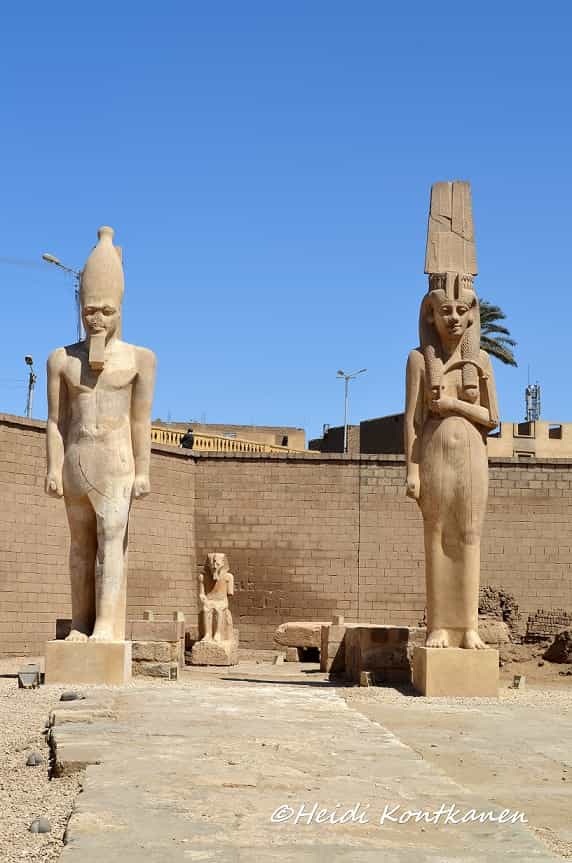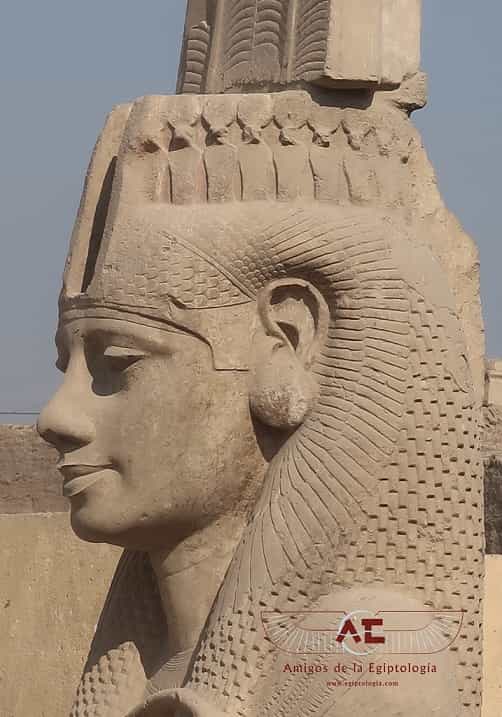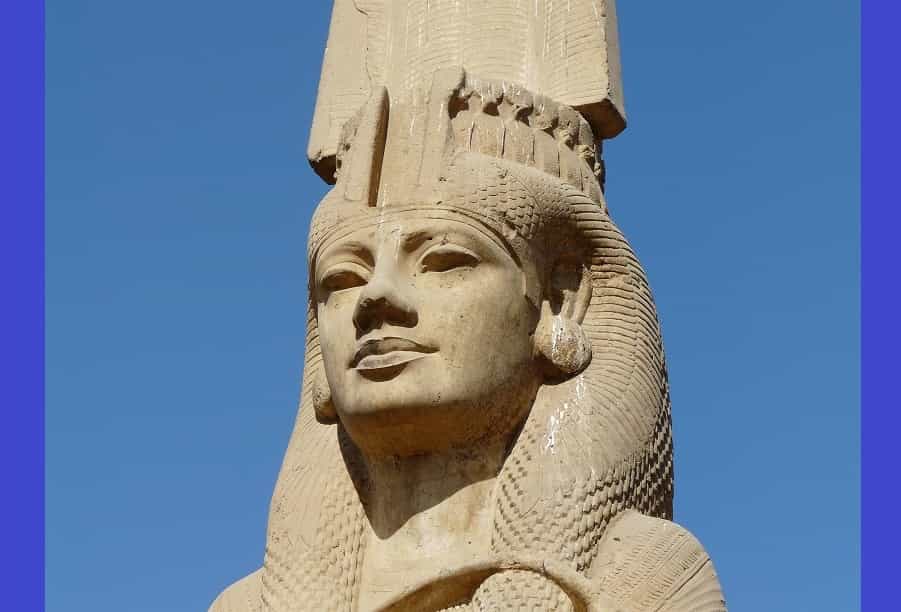In 1981, archaeologists unearthed a towering limestone colossus in Akhmim, unveiling an impressive tribute to Meritamun, the daughter of Pharaoh Ramesses II and his esteemed Great Royal Wife, Nefertari.
Standing at seven meters tall, this monumental discovery captivated researchers from the outset due to its remarkable state of preservation and the exquisite craftsmanship evident in its design.
Excavations in 1982 further highlighted the significance of the colossus of Meritamun, offering insights into her role and prominence within ancient Egyptian royalty.
Queen Meritamun
Historically regarded as possibly the eldest daughter of Ramesses II and Nefertari, Meritamun’s exact birth order remains debated amidst conflicting historical records. It is plausible that she was born prior to her father’s ascension to the throne, suggesting a privileged status among her siblings.
Following the passing of her mother, Nefertari, during the 27th or 28th year of Ramesses II’s reign, Meritamun assumed the prestigious title of Great Royal Wife. It is in this distinguished capacity that she is immortalized in the Colossus of Akhmim, symbolizing her elevated stature and significant role within the royal court.
Meritamun, much like her mother Nefertari, evidently harbored a profound affinity for Upper Egypt and specifically for the town of Akhmim. This sentiment is eloquently reflected in the grand colossus erected there, standing prominently before the facade of the temple within the sacred precinct dedicated to the god Min, the city’s patron deity.
Akhmim held pivotal importance in the realm of the pharaohs as a venerable religious center since ancient times. It was here that the cult of the complex god Min flourished—a deity associated not only with virility but also revered as a guardian of agricultural prosperity, livestock, the moon, the desert, and pathways. Additionally, Min played a crucial role in ceremonial rites that celebrated the renewal of royal power and safeguarded the monarchy.
Colossus of Queen Meritamun
In the Colossus of Akhmim, Meritamun is depicted clad in a form-fitting, floor-length gown adorned with pleated sections and a long ribbon-like belt cinched at the waist, enhancing the sculpture’s textural richness.
She is further adorned with a broad collar and holds in one hand a symbol of her regal authority, while the other arm gracefully extends along her body, terminating in a clenched fist.
These subtle nuances—such as the bent elbow and the advanced left leg—infuse a sense of dynamism into the otherwise serene representation, showcasing the ancient artists’ mastery in achieving a harmonious and balanced composition.
The visage of this colossus is particularly arresting, exuding a commanding presence with its distinctive features: a strong chin, almond-shaped eyes, a gently upturned nose, and a serene expression.
Meritamun is portrayed as a figure of power and reverence, her portrayal transcending mere beauty to encompass her authoritative stature.
When observing this colossal statue, one cannot help but be mesmerized by the depiction of the majestic crown adorning Meritamun’s image. It is a headdress typical of ancient Egyptian queens, featuring a coil of cobras from which emerge two long feathers, imparting a slender and spectacular appearance to the sculpture.
However, the crown is not fully intact; above the forehead, there remains a socket where a piece, possibly depicting a cobra and/or a vulture’s head, was once fitted. It is conceivable that this missing element was a metallic adornment, intended to enhance the liveliness of the representation with its gleaming presence.
Equally striking is the elaborate wig composed of numerous strands, meticulously crafted by Egyptian artisans. The wig is softened around the face with the addition of vulture wings, serving to frame and accentuate the visage while introducing a subtle change in texture. The vulture holds significant symbolism in the headdresses of Egyptian queens, seamlessly blending with the wig in this representation.
A distinctive feature of Meritamun’s portrayal lies in the large, rounded ear studs adorning her ears. These ear ornaments stand out prominently, emphasizing the solemnity of her expression and contributing to her overall sophisticated appearance. They serve as emblematic elements that underscore the regal stature and dignified presence of Meritamun in this monumental depiction.
To truly grasp the splendor of the colossus of Meritamun in Akhmim, it is recommended to circumnavigate the statue, examining its lateral perspectives rather than just viewing it head-on. This approach allows one to appreciate the sculpture’s full dimensions and intricacies from different angles.
Behind the colossus, an inscription has been preserved, detailing Meritamun’s esteemed priestly roles: she is identified as the head of the harem of Amun, the priestess who plays the sistrum of Mut, the one who shakes the menat of Hathor, and a singer devoted to Atum.
The inscription further praises Meritamun as the one who soothes the Lord of the Two Lands with her words, emphasizing her as the beloved daughter of the king. Her radiant countenance is celebrated, along with her magnificence within the palace, and she is even likened to the celestial star Sirius in her brilliance.
Situated prominently before the sanctuary of the god Min in Akhmim, Meritamun’s statue must have commanded a formidable presence. This impression is heightened by the placement of another colossus nearby, flanking the entrance—a monumental depiction of Ramses II, which was also unearthed during the excavations.
